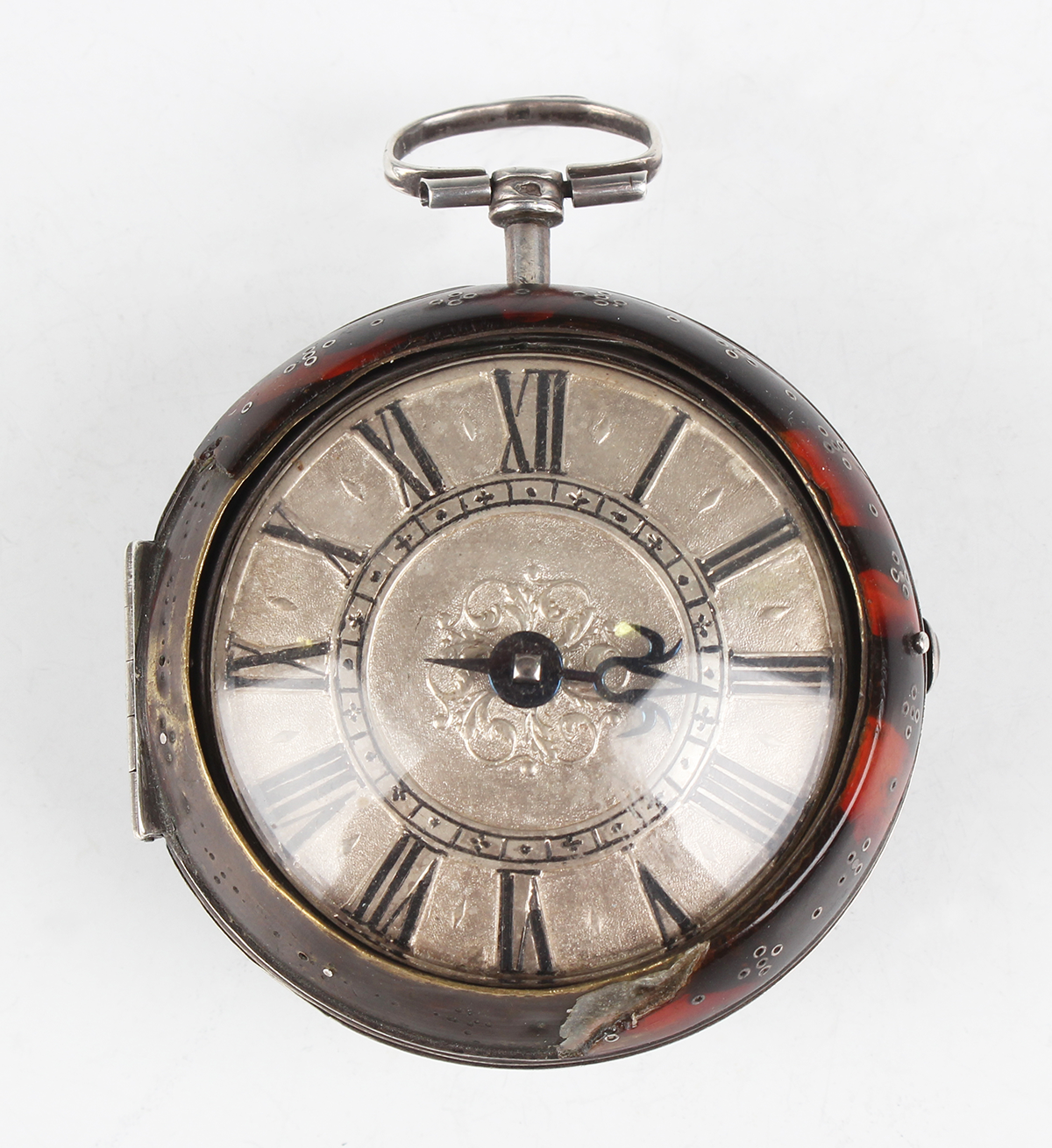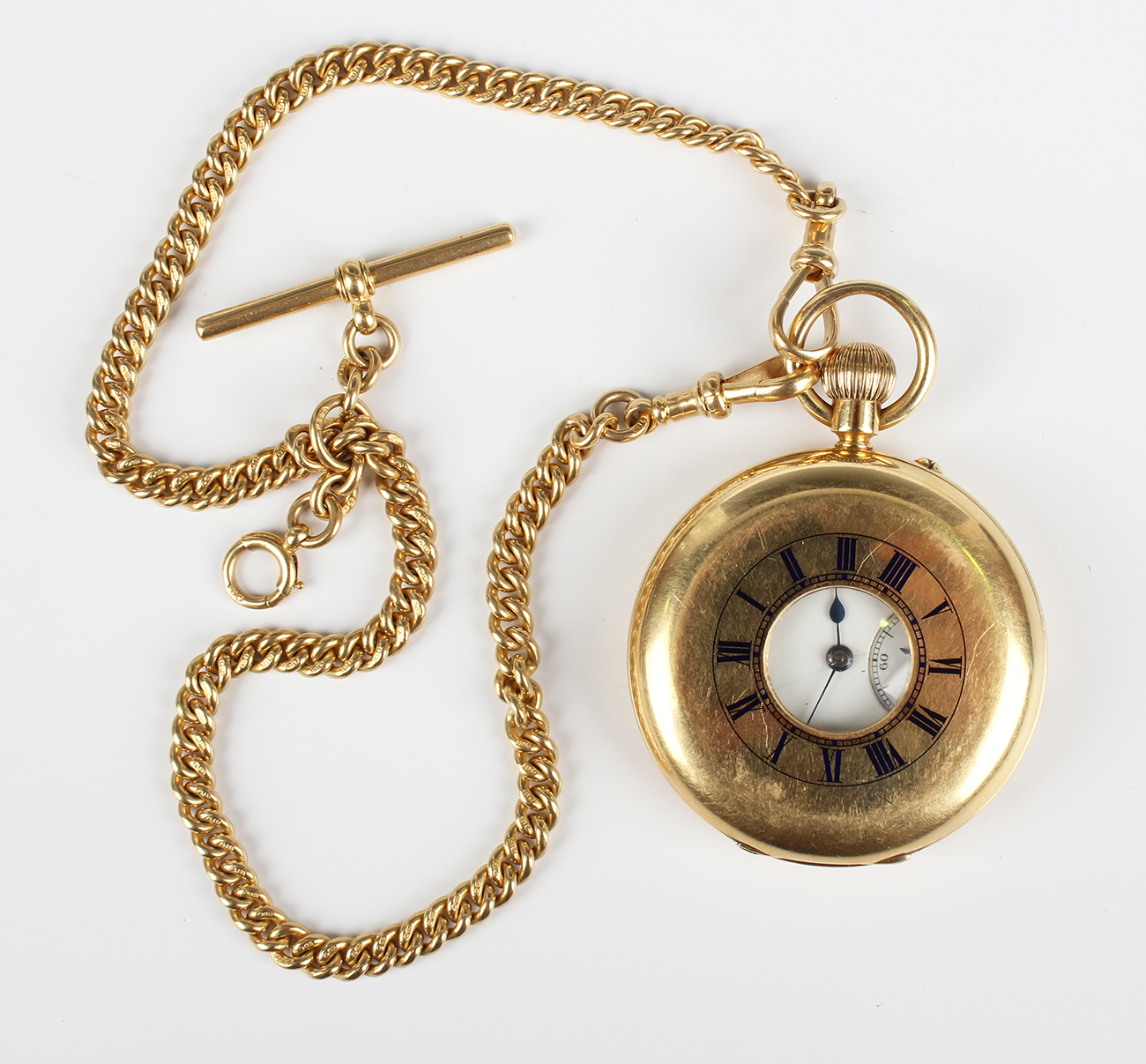
It was Charles II who made the waistcoat fashionable and caused watches to be made differently so that they would fit in a pocket, hence the name pocket watch. They became rounded and flatter with no hard edges and glass was fitted to protect the dial.
These early watches were handmade with verge escapements like the late 17th century silver and tortoiseshell key wind pair cased gentleman’s pocket clock watch by Nathaniel Barrow of London. It had a gilt fusee movement with verge escapement and pierced and engraved balance cock striking on a bell. Nathaniel Barrow is recorded as a London watchmaker. He was apprenticed in 1653/54, made free of the Clockmakers Company in 1660/61 becoming an assistant in 1676 and master in 1689. He died in 1700. The watch’s silvered champlevé type dial had black Roman hour numerals and a single hand. The outer case lacked a section of tortoiseshell and was silver piqué inlaid with a scene depicting the sun, a tree and buildings. It is unsurprising that this fine pocket watch had been owned by Tom Robinson, the past chairman of The Antiquarian Horological Society and author of numerous horological books. It realised £3800 in a Toovey’s specialist watch sale.
It was not until Thomas Mudge invented the lever escapement in 1755 that watches attained a level of accuracy of within a minute a day. This new level of accuracy saw the widespread introduction of the minute hand. By the 1820s the lever escapement had become common. Watches were the preserve of the very wealthy. The Industrial Revolution allowed for the standardisation of machine made watch parts enabling watches to be made more quickly and less expensively so that by the mid-19th century pocket watches were being made in large quantities for the majority of men across Britain, Europe and America.

Demand is growing for these later watches too as the fashion for pocket watches returns. The 1896, Victorian, 18ct gold keyless wind half hunting cased gentleman’s pocket watch, with its jewelled lever movement, was hallmarked in Birmingham in 1896. Together with its 18ct gold curblink watch Albert chain and T-bar it realised £3100 at Toovey’s.
Prices for pocket watches have risen dramatically in recent years.
Perhaps it’s time to change your watch. Toovey’s Director, Tom Rowsell, is always pleased to offer advice whether you are considering acquiring or selling watches in this booming market.